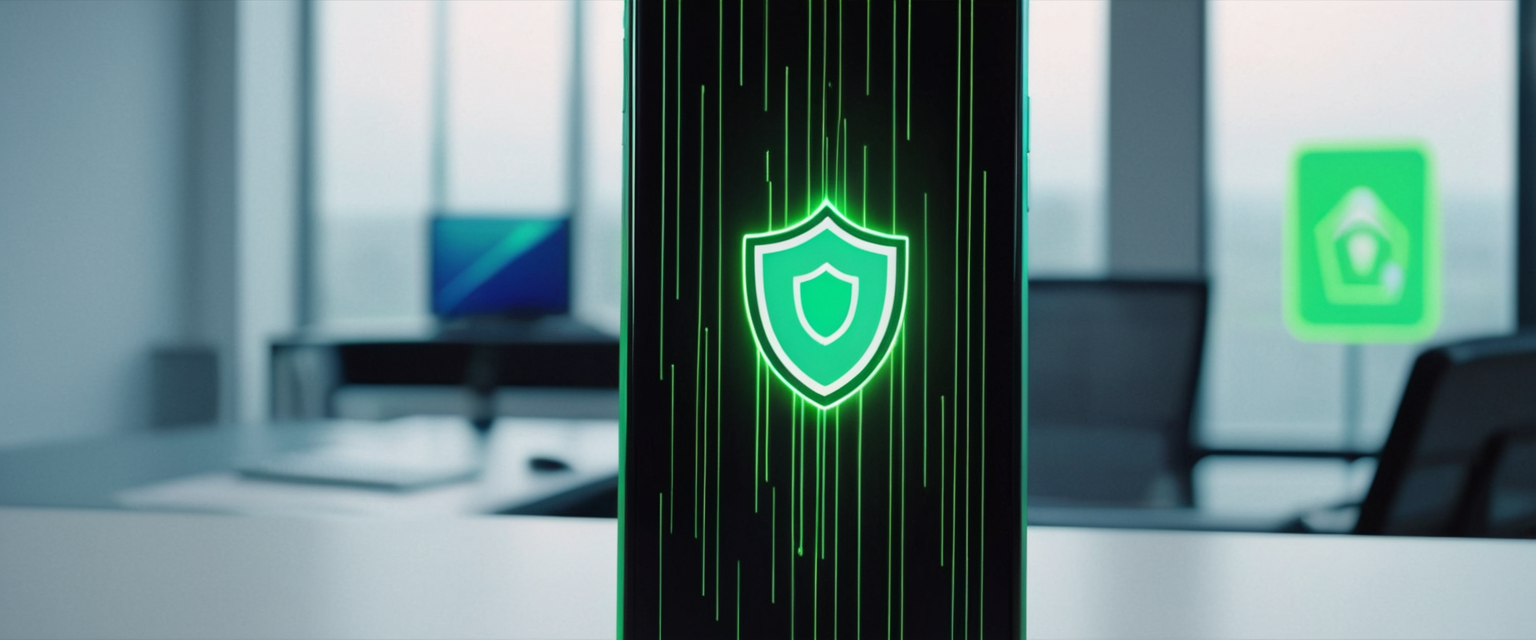
The question of whether Android users require third-party antivirus protection has become increasingly nuanced in the evolving landscape of mobile security threats. Recent data reveals that Android devices face mounting cybersecurity challenges, with malware targeting Android devices surging by one hundred fifty-one percent during the first half of 2025, while hundreds of malicious applications accumulated over forty million downloads from the official Google Play Store between June 2024 and May 2025. Yet paradoxically, Android’s sophisticated built-in security features, particularly Google Play Protect, provide robust baseline protection for most users who practice responsible device management. This comprehensive analysis examines whether third-party antivirus software represents a necessary security layer or an optional supplement, exploring the technical realities of Android security architecture, the genuine threats facing users, and the specific circumstances under which additional protection becomes worthwhile. The answer ultimately depends on individual user behavior, device configuration, and the sensitivity of data stored on the device, requiring a careful examination of both the capabilities and limitations of existing Android security measures.
Understanding Android Threats and the Distinction Between Viruses and Malware
The first essential clarification in any discussion of Android security involves the semantic and functional difference between viruses and malware, a distinction that fundamentally shapes our understanding of whether traditional antivirus protection is applicable to mobile devices. Android phones, strictly speaking, cannot contract traditional computer viruses that replicate and spread through self-propagation mechanisms across systems and networks. This technical reality represents a critical limitation of the virus metaphor when applied to smartphones. Instead, Android devices face substantially different categories of malicious code encompassing spyware that covertly monitors user activity, ransomware that locks devices and encrypts files, trojans that masquerade as legitimate applications to gain unauthorized access, adware that bombards users with unwanted advertising, and potentially unwanted applications that consume resources and violate user privacy.
The terminology confusion stems from common usage wherein the word “virus” has become a catch-all category for all forms of malicious software, despite its technical inaccuracy when applied to mobile devices. This semantic imprecision has led many users to search for “antivirus” solutions when what they genuinely need is anti-malware protection. The distinction matters operationally because traditional antivirus software, designed for desktop systems where code can achieve deep system access and create self-replicating propagation mechanisms, functions quite differently on restricted mobile operating systems. Android’s fundamental architecture prevents many of the attack vectors that desktop viruses exploit, yet simultaneously permits targeted malware threats that users must understand to make informed security decisions.
The malware ecosystem targeting Android has become increasingly sophisticated and professionalized. The AV-TEST Institute registers nearly four hundred thousand new pieces of malware every day, with almost all of this code designed for illicit financial gain or unauthorized data extraction. This represents not amateur hobbyist virus creation but rather organized criminal enterprises operating what security experts describe as a “dark economy” where cyber tools, stolen personal information, and specialized programmers are traded as commodities. The scale and professionalization of this threat landscape has transformed mobile security from a theoretical concern into a practical reality affecting millions of users globally.
Recent threat research reveals shifting patterns in how Android malware operates and targets users. Between June 2024 and May 2025, spyware increased by one hundred forty-seven percent, while SMS-based malware surged by six hundred ninety-two percent between April and May, likely reflecting seasonal scam campaigns targeting vulnerable populations. Additionally, adware has emerged as the dominant threat, accounting for approximately sixty-nine percent of all detections on Android devices, nearly double the proportion recorded in the previous year. These shifts indicate that attackers are evolving their tactics from broad-spectrum malware campaigns toward precisely targeted social engineering attacks that exploit human psychology rather than relying solely on software vulnerabilities.
Android’s Built-in Security Architecture and Google Play Protect
Google has invested substantially in creating multiple layers of security built directly into the Android operating system, forming a comprehensive defensive infrastructure that provides meaningful protection without requiring users to install additional software. This built-in security architecture represents one of the most significant reasons why many Android users can operate their devices safely without third-party antivirus applications. Understanding the scope and limitations of these built-in protections is essential to making informed decisions about whether supplementary protection is necessary.
Google Play Protect stands as the cornerstone of Android’s malware defense strategy, operating as a comprehensive scanning and enforcement system that works across multiple domains of the device’s functionality. This system scans approximately two hundred billion Android applications daily to identify potentially harmful code, representing the most widely deployed mobile threat protection service globally. Play Protect does not merely function as a passive filter on the Google Play Store; it actively monitors applications both during and after installation, continuously scanning the apps already present on devices and alerting users when potentially harmful behavior is detected.
The technical sophistication of Google Play Protect has improved markedly in recent years, leveraging machine learning and artificial intelligence algorithms to recognize malicious behavior patterns rather than relying solely on signature matching of known threats. Google’s advanced intelligence and machine learning systems help proactively protect users against new threats every day, using behavioral analysis to identify code patterns characteristic of malware even before those patterns become established in signature databases. This represents a fundamentally different approach from traditional antivirus systems that matched suspicious code against comprehensive lists of known malware signatures, a methodology that became increasingly ineffective as malware variants multiplied and obfuscation techniques improved.
Beyond Play Protect, Android devices include multiple complementary security features that collectively form a robust defensive posture. Default security settings restrict the installation of applications from unknown sources outside the Google Play Store, requiring explicit user permission to override this protection. Android devices encrypt user data by default, protecting information in cases of device theft or unauthorized access. The Find My Device feature enables users to remotely locate, lock, or erase lost or stolen Android phones. Biometric authentication using fingerprints and facial recognition adds additional authentication layers beyond simple passwords or PINs.
Monthly security updates introduced with Android 10 represent another crucial security mechanism, allowing Google to push critical security fixes directly to devices, bypassing manufacturer delays that historically created extended periods where known vulnerabilities remained unpatched. This modular update system ensures that critical security issues can be addressed rapidly without requiring full operating system updates that manufacturers traditionally delayed or failed to distribute. These security updates address the identified vulnerabilities in official Android Security Bulletins, continuously strengthening the platform’s defense against known attack vectors.
However, significant limitations exist in Android’s built-in security infrastructure that prevent it from providing complete protection against all threats. Google Play Protect’s effectiveness, while substantial, remains imperfect. Independent testing discovered a bug in Play Protect that occasionally caused cloud requests to fail, preventing Play Protect from blocking the installation of some malicious applications, as detailed in a Mobile Security Review 2025. Additionally, malicious applications continue to slip through Play Protect’s screening processes and into the official Google Play Store, sometimes accumulating hundreds of thousands of downloads before detection and removal; indeed, hundreds of malicious apps have been downloaded 42 million times. With 2.7 million applications and rising on the Google Play Store, even a very small percentage of escaping malicious code represents millions of potentially compromised installations.
The security update distribution system, while improved, remains inconsistent across the Android ecosystem. Not all Android devices receive monthly security updates in timely fashion; many users operate devices running outdated Android versions with no current security patches. Research indicates that over thirty percent of Android devices remain stuck on outdated operating systems unable to receive critical security patches, yet are still actively used for banking, shopping, and other sensitive activities. This fragmentation creates a class of vulnerable devices that represent easy targets for opportunistic malware campaigns, particularly devices running Android 7 or earlier that operate on manufacturers’ end-of-life status and receive no ongoing security support.
The Emerging Threat Landscape: Recent Data and Evolving Attack Methodologies
The Android threat landscape in 2024 and 2025 has entered what security researchers characterize as a new phase marked not merely by the volume of threats but by their coordination, precision, and sophistication. Understanding this recent threat data provides essential context for decisions about whether third-party antivirus protection has become more or less necessary. Recent Malwarebytes threat research data reveals a dramatic transformation in how attackers target Android users, shifting from broad indiscriminate malware distribution toward carefully orchestrated campaigns exploiting specific human behaviors and financial vulnerabilities.
The overall malware threat level targeting Android devices has escalated substantially, with malware targeting Android devices increasing by one hundred fifty-one percent during the first half of 2025 compared to the preceding period. This statistic represents far more than abstract numbers; it reflects millions of actual compromised devices and attempted compromises affecting real users. Notably, this growth occurred despite Google’s continued investment in Play Protect and despite manufacturers’ ongoing security update efforts, suggesting that the threat escalation outpaces improvements in platform defenses.
Specific malware families demonstrate the sophistication and persistence of contemporary Android threats. Anatsa represents a particularly concerning banking trojan that periodically infiltrates the official Google Play Store via productivity and utility applications, accumulating hundreds of thousands of downloads each time it appears. The latest Anatsa variant can steal data from over eight hundred thirty-one financial organizations and cryptocurrency platforms across multiple continents, demonstrating an ambitious scope of targets and continuous evolution of capabilities. Android Void (Vo1d), a backdoor malware targeting Android TV boxes, has infected at least 1.6 million devices running outdated Android Open Source Project versions, primarily in India and Brazil. Xnotice, a new Android remote access trojan specifically targeting job seekers in the oil and gas industry, spreads through fake employment portals and can steal banking credentials, multi-factor authentication codes, and SMS messages. These examples demonstrate that contemporary Android malware represents not unsophisticated attack code but rather professional tools developed by organized criminal enterprises with specific targeting criteria and ambitious technical capabilities.
The geographic distribution of Android malware attacks reveals a global phenomenon with pronounced concentrations in specific regions. During the June 2024 to May 2025 period, India, the United States, and Canada collectively received fifty-five percent of all mobile malware attacks, while Italy and Israel experienced massive spikes ranging from eight hundred to four thousand percent year-over-year increases. This geographic variation reflects both the concentration of vulnerable or valuable targets and the specific targeting priorities of organized cybercriminal groups operating from particular regions.
Significantly, the threat landscape has evolved substantially in attack methodologies and target prioritization. Threat actors have deliberately shifted away from traditional card fraud toward exploitation of mobile payment systems using social engineering techniques including phishing, smishing (SMS phishing), SIM-swapping, and payment scams. This shift reflects both improved security of traditional payment card systems through chip-and-PIN technology and the widespread adoption of mobile payment platforms that represent easier targets for social engineering attack. To execute these sophisticated attacks, cybercriminals deploy phishing trojans and malicious applications specifically designed to steal financial information and login credentials from users who believe they are interacting with legitimate services.
Banking malware specifically has grown significantly over the past three years, reaching 4.89 million transactions in 2025, though the growth rate has slowed to just three percent during the recent measurement period, down from twenty-nine percent in the previous year. This deceleration potentially reflects either market saturation among vulnerable populations or the relative maturation of banking trojan methodologies. Spyware has recorded a particularly alarming increase of two hundred twenty percent year-over-year, with SpyLoan, SpyNote, and BadBazaar families driving this surge by conducting surveillance, extortion, and identity theft against victims.

When Third-Party Antivirus Becomes Necessary: Risk Factors and Use Cases
Despite Android’s built-in security capabilities, specific user behaviors and device configurations create circumstances where third-party antivirus protection provides meaningful additional security value. Understanding these risk factors allows users to make data-driven decisions about whether supplementary protection aligns with their specific threat profile and security requirements. The decision to install third-party antivirus should not be treated as a binary all-or-nothing question but rather as a risk-based assessment aligned with individual circumstances.
Users who deliberately sideload applications from third-party sources outside the Google Play Store enter a substantially higher-risk category requiring additional protection. Sideloading represents the practice of installing applications through non-official distribution channels, deliberately circumventing the security vetting processes Google applies to Play Store applications. When a user sideloads an application, they are consciously and knowingly configuring their device to bypass the operating system’s built-in safeguards designed to protect the user and device. This dramatically elevates the risk posture because no vetting process is enforced on the installed applications. Real attack chains documented by security researchers show devices becoming fully compromised within minutes of sideloading malicious applications, with attackers gaining complete root access to the device and ability to modify system files. For users who sideload applications regularly, particularly from unverified or untrusted sources, third-party antivirus protection provides meaningful additional protection scanning sideloaded applications before or after installation.
Protect Your Digital Life with Activate Security
Get 14 powerful security tools in one comprehensive suite. VPN, antivirus, password manager, dark web monitoring, and more.
Get Protected NowUsers who frequently connect to public Wi-Fi networks face elevated security risks from man-in-the-middle attacks where malicious actors intercept unencrypted network traffic to capture sensitive data including login credentials and financial information. While public Wi-Fi itself does not directly transmit malware to devices, it represents an environment where attackers can more easily monitor and intercept communications. For users who conduct sensitive transactions on public networks or who handle confidential work data via insecure Wi-Fi, antivirus protection becomes less directly relevant than VPN protection and careful network discipline. However, the unsecured nature of public Wi-Fi can coincide with installation of malicious applications, particularly through compromised wireless networks that masquerade as legitimate access points to capture user data and distribute malware.
Users who handle sensitive personal or financial data on their Android devices face substantially higher consequences from potential malware infections. Those using their phones for online banking, work-related files containing confidential information, or personal health records represent higher-value targets for cybercriminals and face more severe consequences if their device becomes compromised. For these users, additional security layers including antivirus protection, careful app permission management, and behavioral monitoring become more justified by the potential costs of data compromise.
Users operating older devices running outdated versions of Android that no longer receive security updates enter particularly vulnerable territory. Over thirty percent of Android devices remain stuck on outdated operating systems unable to receive critical security patches, yet are still being actively used for sensitive purposes. These devices represent sitting ducks vulnerable to known exploits for which patches have long existed but which cannot be deployed to devices no longer receiving updates. For users unable or unwilling to upgrade to newer devices, antivirus protection represents one of the few available defenses against exploitation of known vulnerabilities.
Users who want real-time protection and enhanced features beyond what built-in security provides may find value in third-party solutions. Some antivirus applications offer features including anti-theft tools that enable remote device tracking and locking, phishing detection specifically monitoring suspicious links and emails, enhanced malware scanning beyond Play Protect’s capabilities, and integration with other security tools like password managers and VPNs. These supplementary features may provide peace of mind and practical utility even for users whose base threat profile would be adequately protected by built-in security alone.
Conversely, users should recognize circumstances where additional antivirus protection provides minimal additional value. For users who download applications exclusively from the Google Play Store and maintain rigorous discipline avoiding suspicious links and fraudulent schemes, built-in security likely provides adequate protection. Google Play Protect already scans applications in the store before they reach users and continuously monitors installed applications for suspicious behavior. For users who do not frequently use public Wi-Fi or connect primarily to trusted networks they control, the Wi-Fi-based threat vector becomes substantially reduced. For users who maintain strict discipline regarding what data they store on their phones and refrain from using devices for sensitive financial transactions or access to confidential information, the consequence of potential compromise becomes substantially reduced.
Evaluating Third-Party Antivirus Solutions: Testing Data and Effectiveness
For users who determine that third-party antivirus protection aligns with their security requirements, understanding which solutions provide genuine protection versus misleading marketing claims becomes essential. Independent testing organizations including AV-TEST and AV-Comparatives have conducted rigorous evaluations of Android security products, providing objective data about detection rates, false positive performance, and impact on device performance.
The most recent AV-TEST evaluation in September 2025 tested thirteen mobile security products for Android, evaluating detection rates, performance impact, and usability. Products achieving certification demonstrated detection rates of one hundred percent and usability scores of six out of six, indicating they detected all malware samples tested without excessive false positives or usability issues. Certified products included AhnLab V3 Mobile Security, Avast Antivirus & Security, AVG Antivirus Free, Avira Antivirus Security, Bitdefender Mobile Security, F-Secure Total Security & VPN, Kaspersky Premium for Android, McAfee Mobile Security, Norton 360, Protected.net TotalAV Mobile Security, securiON OnAV, and Sophos Intercept X for Mobile. These products represent solutions that have demonstrated consistent effectiveness across independent testing.
Norton 360 represents one of the most user-friendly Android antivirus options, designed to work equally well for novices unfamiliar with security concepts and advanced users seeking comprehensive feature sets. Independent testing by AV-TEST demonstrated Norton 360 achieving a one hundred percent malware detection and protection rate using over 2,900 malware samples, indicating exceptional performance against both widespread and novel threat variants. The application performed excellently on real-time protection tests, consistently blocking phishing pages and drive-by malware downloads. Users report that Norton 360 provides intuitive navigation, helpful explanations for all settings, and minimal performance degradation during scanning operations.
TotalAV Antivirus achieved ninety-nine point nine percent detection and protection rate against widespread Android malware according to AV-TEST data. The application scored five out of six in usability and six out of six in performance, indicating strong technical capability with minimal battery or performance impact. TotalAV distinguishes itself through feature richness including web protection via WebShield that blocks malicious and phishing websites, Wi-Fi security checking that warns users about unsafe network connections, app lock functionality preventing unauthorized access to specific applications, and data breach monitoring that alerts users if their email addresses appear in known data breaches.
Bitdefender Mobile Security has achieved consistent near-perfect test scores across multiple independent testing labs, with all certifications demonstrating excellent performance across protection, performance, and usability categories. The application provides both free and paid versions, allowing users to test basic functionality before committing to premium features. Independent evaluators report that Bitdefender provides robust malware detection with minimal impact on device performance and battery life, making it particularly suitable for users concerned about the overhead costs of antivirus software.
AVG Antivirus Free received perfect AV-TEST scores of six out of six in all evaluation categories, demonstrating excellent malware detection combined with strong performance characteristics. As a free solution, AVG provides substantial functionality including protection against ransomware, spyware, and adware, anti-theft phone tracking, and regular malware scanning. The absence of cost barriers makes AVG an attractive option for users seeking basic protection without premium subscription expenses, though paid upgrade options provide additional features like phishing protection and Wi-Fi security.
Several important caveats apply when interpreting third-party antivirus test results. Independent testing organizations test products in controlled laboratory environments using carefully selected malware samples, not against the full universe of threats encountered in real-world usage. Products performing excellently in laboratory testing may encounter real-world attack variants not represented in test sample sets. Additionally, antivirus effectiveness represents only one component of security; a product achieving one hundred percent detection in testing still cannot protect users from zero-day exploits representing previously unknown vulnerabilities, from social engineering attacks that exploit user behavior rather than software vulnerabilities, or from the human tendency to grant excessive application permissions or trust suspicious applications.
Machine Learning and Artificial Intelligence in Modern Android Security
The evolution of antivirus technology from signature-based detection toward machine learning and artificial intelligence algorithms represents a fundamental transformation in how modern security tools identify malicious code. Understanding this transition provides critical context for evaluating the relationship between third-party antivirus and traditional built-in security, as both approaches increasingly rely on similar underlying technologies.
Traditional antivirus systems relied on matching code signatures against comprehensive databases of known malware, a methodology that proved increasingly ineffective as malware evolved. Malware authors developed sophisticated obfuscation techniques that modified code in ways that changed its signature while preserving its malicious functionality, allowing slightly modified versions of malware to evade signature-based detection. The fundamental limitation of signature-based detection emerges from the time lag between malware discovery, analysis, signature creation, and distribution to devices. When the WannaCry virus distributed to over one hundred thousand devices within minutes, traditional antivirus systems failed completely to protect users because signatures did not exist for this novel threat when it began propagating.
Modern antivirus solutions, both built into Android and offered as third-party applications, increasingly employ machine learning algorithms trained on vast datasets of malware and benign applications to recognize inherent characteristics of malicious code even without prior knowledge of specific threats. These AI-based algorithms analyze behavioral patterns, code structure, permission requests, network communications, and other features characteristic of malware to identify suspicious applications. Some security researchers suggest that current AI-based malware definitions could potentially protect against malware that has not yet been written, recognizing malicious intent based on code characteristics before specific malware variants emerge.
Google’s implementation of machine learning in Play Protect and Android security examines patterns in billions of messages and applications to identify characteristics associated with malicious behavior, enabling rapid detection of new threat variants without requiring new signatures or manual analysis. Chrome’s integration of machine learning protection warns users about malicious websites and deceptive content based on learned behavioral patterns rather than maintained blacklists. This represents an evolution that effectively narrows the practical difference between built-in security implementing machine learning algorithms and third-party antivirus also relying on machine learning and AI.

Security Best Practices as Alternatives and Complements to Antivirus
Regardless of whether users choose to install third-party antivirus protection, fundamental security practices provide the essential foundation that no antivirus application can replace. Responsible device behavior and attention to security hygiene prove more important than reliance on any single software tool or security application. Understanding these foundational practices allows users to assess whether additional antivirus protection represents genuine added value or merely creates a false sense of security that might encourage riskier behavior.
Keeping Android operating systems and applications current with the latest security updates represents the single most impactful security practice available to users. Monthly security updates address newly discovered vulnerabilities before attackers can broadly exploit them. Users should enable automatic updates where available and regularly check for pending updates if automatic updating is disabled. Devices running old Android versions represent substantially higher-risk targets for opportunistic malware campaigns exploiting known vulnerabilities for which fixes have long existed.
App permission management provides another critical security practice enabling users to restrict what sensitive data and device capabilities applications can access. Applications that request excessive or inappropriate permissions represent red flags warranting investigation or uninstallation. A PDF reader application, for example, has no legitimate reason to request access to contacts, location data, or camera functionality; such excessive permission requests suggest the application may have purposes beyond its advertised functionality. Users can review and modify app permissions through the device settings menu, revoking access to sensitive information where applications request unnecessary permissions.
Downloading applications exclusively from the official Google Play Store provides substantial protection against installation of well-known malware variants. While Play Store occasionally contains malicious applications despite Google’s screening processes, the store represents a vastly lower-risk source than downloading from arbitrary websites or third-party app stores where quality vetting is minimal or absent. Users who disable downloads from unknown sources and enforce this setting prevent themselves from accidentally installing malware obtained through informal distribution channels.
Strong authentication including unique passwords, multi-factor authentication, and biometric authentication significantly improves security by preventing unauthorized access to accounts and services even if malware somehow obtains credentials through phishing or spyware. Password managers solve the practical difficulty of maintaining unique complex passwords across dozens or hundreds of accounts, generating and storing randomly generated passwords that even malware compromising a single service cannot use to compromise other accounts. Biometric authentication using fingerprints or facial recognition provides authentication that cannot be stolen or shared, representing a substantially higher-security authentication factor than passwords.
Careful evaluation of links, attachments, and suspicious requests provides protection against phishing and social engineering attacks that trick users into voluntarily installing malicious applications or revealing sensitive information. Users should be skeptical of unexpected requests from banks, payment services, government agencies, or other trusted sources received via email or SMS, as these represent common phishing vector delivery mechanisms. Verifying requests through official channels, contacting organizations through officially published phone numbers or websites rather than using contact information from suspicious messages, and generally maintaining skepticism about unsolicited requests provides protection even against sophisticated phishing campaigns.
Regular app audits and uninstallation of unused applications reduce the attack surface and eliminate dormant security risks from applications no longer actively maintained by developers. Applications unused for several months represent potential security liabilities if their developers have stopped releasing security updates. Quarterly review of installed applications and uninstallation of items no longer used reduces the number of potential entry points for malware or data exposure.
Public Wi-Fi presents inherent risks that neither antivirus nor careful app selection fully mitigates. Virtual private networks (VPNs) encrypt data traveling between the device and the VPN provider’s servers, preventing eavesdropping on open networks. VPNs should be used on public Wi-Fi networks, particularly when accessing sensitive services like banking or email. Users should verify VPN app authenticity and reviews before installation, as some VPN applications themselves track and monetize user data, defeating privacy purposes.
Rooting and Device Modification: Security Implications
Users who have rooted or are considering rooting their Android devices enter a qualitatively different security landscape where antivirus protection takes on increased importance but cannot fully mitigate the security implications of device modifications. Rooting is the process of obtaining superuser or administrative access to an Android device operating system, granting the user unrestricted control over system files and settings. While rooting enables desirable functionality including custom ROM installation, system optimization, and advanced customization, it fundamentally undermines Android’s security architecture.
Rooting disables the built-in security features that operate at the system level to restrict what applications can access and modify. When a device is rooted, applications gain potential access to the full breadth of system resources previously restricted by Android’s application sandboxing and permission system. Rooted devices become substantially more susceptible to viruses and malware because users can circumvent the Google and device manufacturer application vetting processes that help ensure downloaded applications are not malicious. Security patches and updates are no longer automatically installed on rooted devices, leaving the user responsible for manually managing security updates on a device with substantially expanded attack surface.
Rooted devices face additional security implications beyond malware vulnerability. Many streaming services and financial institutions explicitly refuse to provide their applications on rooted devices, recognizing the substantially increased security risks. Banks and payment systems sometimes detect rooted devices and refuse to allow sensitive transactions, forcing users to unroot devices to access banking functionality. Device warranties are often voided through rooting, leaving users without manufacturer support for repairs or replacements if something goes wrong.
For users who have rooted devices, third-party antivirus protection becomes more justified and potentially more necessary compared to ordinary users. The erosion of Android’s native security architecture creates a situation where additional monitoring and threat detection becomes prudent. However, antivirus protection remains an imperfect solution for rooted devices, as the fundamental security assumptions underlying the protection have been violated.
Battery Life and Performance Considerations
A practical concern for many users considering third-party antivirus involves potential negative impacts on device battery life and performance. Understanding the actual performance characteristics of modern antivirus applications helps contextualize this concern and separate genuine overhead impacts from exaggerated fears.
Contemporary antivirus applications, particularly those certified by independent testing organizations, demonstrate minimal impact on device performance and battery life. AV-TEST testing specifically measures performance impact as one of its evaluation criteria, with certified products achieving scores of six out of six in performance categories, indicating negligible performance degradation. Most high-quality antivirus applications run primarily in background mode using minimal processing resources until a scan is actively initiated or suspicious activity is detected. Unlike older antivirus implementations that continuously ran resource-intensive scanning, modern applications employ selective scanning and cloud-based threat analysis that offloads processing to remote servers rather than consuming device resources.
Avira Antivirus Security, for example, runs in sleep mode waiting for commands from the server and therefore has no negative effect on battery life, according to the developer’s technical specifications. This represents a design philosophy where the antivirus application maintains a protective presence without continuously draining battery or consuming processor cycles. Users concerned about battery impact can further optimize by scheduling full-device scans during times when the device is charging and not in active use, avoiding any perception of performance impact during normal usage.
However, battery impact varies across different antivirus products, and users should review specific product performance data before installation if battery life represents a significant concern. Free antivirus applications sometimes implement more aggressive scanning and data collection practices designed to generate advertising revenue, potentially consuming more resources than premium applications focused on protection effectiveness. Users should evaluate specific products’ performance reviews before installation rather than assuming all antivirus applications create substantial overhead.

Enterprise and Business Device Considerations
Enterprise environments present different security requirements and threat profiles compared to personal device usage, creating scenarios where third-party antivirus or comprehensive security suites become more clearly justified and necessary. Organizations managing mobile device populations operate under different threat models where coordinated attacks targeting business data represent realistic threats rather than hypothetical scenarios.
Mobile Device Management (MDM) solutions provide centralized control over employee devices, enabling enforcement of security policies, mandatory security updates, and remote device management including ability to lock devices and erase data if devices are lost or stolen. MDM solutions provide capabilities including application allowlists and blocklists that prevent installation of non-compliant applications, enforcement of encryption requirements, and automated compliance monitoring that detects security violations and triggers alerts. For enterprise environments, MDM represents essential infrastructure for protecting business data stored on mobile devices.
However, MDM solutions alone do not provide complete protection against contemporary threats. MDM can enforce policy compliance and manage devices but cannot detect or defend against all sophisticated malware threats, particularly zero-day exploits representing previously unknown vulnerabilities. Modern enterprise security strategy combines MDM infrastructure with contemporary antivirus and anti-malware protection, layering multiple defenses to achieve defense-in-depth security posture that assumes no single security measure will be completely effective. This represents a different calculation than personal device security where built-in protections may suffice; enterprise security explicitly adopts a assumption that multiple defensive layers are necessary given the value of business data at stake.
Samsung Knox represents enterprise-focused security infrastructure specifically designed to provide separation of work and personal data on Android devices while protecting the operating system from manipulation. Combined with modern antivirus solutions, Samsung Knox enables organizations to maintain security of sensitive business data while allowing employees personal device usage.
Your Android’s Security: Making the Call
The comprehensive analysis of Android security indicates that the answer to whether third-party antivirus protection is necessary depends substantially on individual user circumstances, device configuration, and personal security practices rather than representing a universal recommendation applicable to all users. No single categorical answer—always necessary or never necessary—accurately reflects the nuanced reality of contemporary Android security.
For the substantial majority of users engaging in responsible device practices, specifically those who download applications exclusively from the Google Play Store, refrain from sideloading, maintain current Android operating systems, avoid suspicious links and phishing attempts, and do not store highly sensitive data on their devices, Google Play Protect and Android’s built-in security features provide adequate baseline protection against common malware threats. Installing additional antivirus software for these users provides minimal additional security value while potentially consuming device resources and introducing privacy considerations through additional monitoring infrastructure.
Conversely, specific user populations for whom third-party antivirus protection becomes more clearly justified include users who sideload applications regularly, operate outdated Android devices incapable of receiving current security patches, frequently access sensitive financial data or confidential business information on their devices, or use public Wi-Fi networks regularly for sensitive transactions. For these higher-risk users, additional protection layers including reputable antivirus solutions tested and certified by independent organizations provide meaningful additional security value.
The quality of available antivirus solutions has improved substantially, with certified products from Norton, Bitdefender, AVG, ESET, Kaspersky, and others demonstrating detection rates exceeding ninety-nine percent in rigorous independent testing while maintaining minimal performance and battery impact. Users who determine that third-party antivirus aligns with their security profile can confidently select solutions from vendors achieving independent certification without concern that protection will prove ineffective.
Rather than treating antivirus as a comprehensive security solution, users should understand protection software as one component within a broader security strategy that prioritizes security practices including keeping devices updated, managing app permissions carefully, downloading applications from official sources, using strong authentication, and exercising skepticism regarding suspicious links and requests. The most secure Android device results from combinations of responsible user behavior, current security patches, and—where circumstances warrant—properly configured security applications from reputable vendors employing contemporary machine learning-based threat detection. This layered approach, combining built-in security, individual discipline, and supplementary protection where needed, provides robust protection against the evolving threat landscape targeting Android devices in 2025 and beyond.






